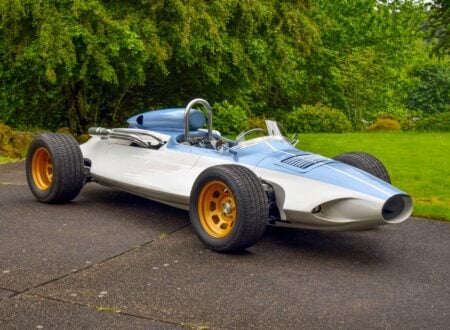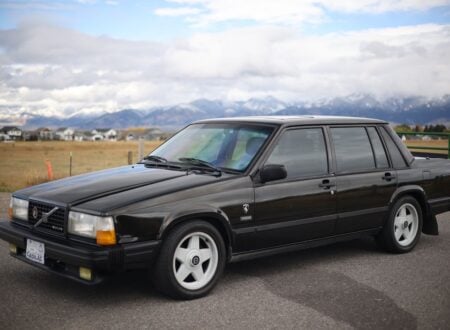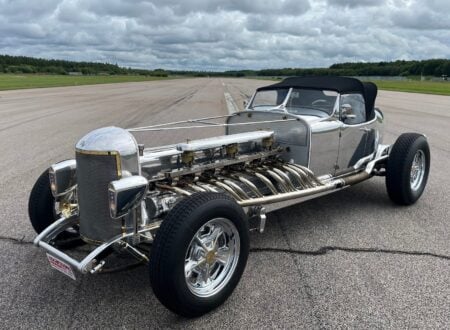This is one of very few surviving examples of the Woodill Wildfire that were bought as kits by the Harry Clark Buick dealership and built by them incorporating many Buick parts – including the 322 cubic inch Buick Fireball V8.
As a result of the modifications that were made at the time they were being built, these Harry Clark “Buick Fireball Specials” look quite distinct from the original Woodill Wildfire. They’re also a lot faster thanks to that Buick V8 that replaced the original 90 bhp Willys inline-six.
Fast Facts – The Woodill Wildfire
- The Woodill Wildfire was originally conceived by dealership owner Woody Woodill in the early 1950s as an American-made fiberglass sports car, sparked by his desire for a Jaguar XK120 alternative. He teamed up with Glasspar’s Bill Tritt to produce a sleek body atop a Willys chassis using Willys parts, aiming to build two and sell one. This would have essentially made the car he kept free.
- Initial reception was hugely positive, including a showcase at Petersen Motorama and a Time magazine feature. Willys-Overland began talks with Woodill about producing the car, but these fell through following Willys’ acquisition by Kaiser-Frazer, who had their own fiberglass sports car project, the Kaiser Darrin.
- Undeterred, Woodill launched limited production himself, offering kits or completed cars between 1952 and 1958. Around 300 were made, each potentially different due to home builders using different engines and chassis, making each surviving example rare and often unique.
- One standout is the “Buick Fireball Special” built by the Harry Clark Buick dealership. It featured a 322 cubic inch Buick Fireball V8, modified 1953 Buick and Chevrolet styling additions, and a Dynaflow transmission. Finished to a high standard, this particular car is among the few known to exist and is now headed to auction with no reserve.
The Incredible Story Of The Woodill Wildfire
The story behind the Woodill Wildfire would make for a compelling Netflix series. It involves a plucky entrepreneur with a big idea, a major American automaker, a corporate takeover, a sleek sports car, and eventually, a plan to beat the odds by launching a new low-volume sports car.
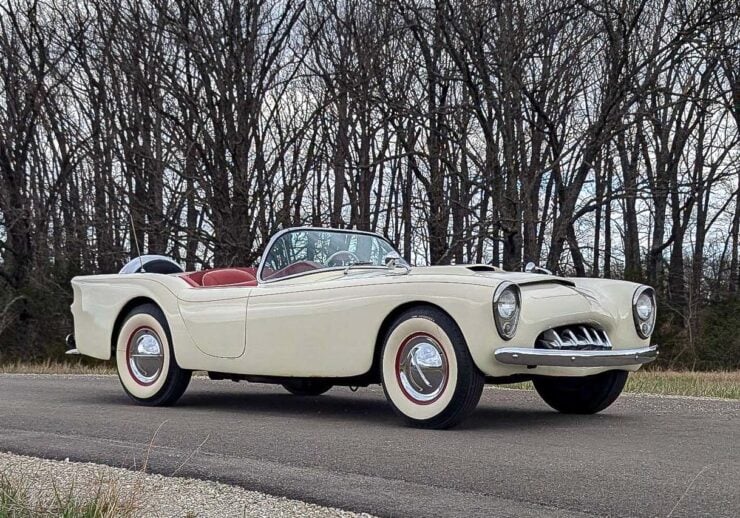

The project to build the Woodill Wildfire started in the early 1950s when successful Willys and Dodge dealership owner Blanchard Robert “Woody” Woodill decided to buy himself a Jaguar XK120 sports car to celebrate the ongoing success of his business. It was one of the fastest road cars in the world at the time, and XK120s were driven by the biggest movie stars of the era including Clark Gable, Gary Cooper, and Humphrey Bogart.
Woodill got talking to one of his mechanics about the car and was quickly talked out of it, with tales of high maintenance costs. Whether true or not, it was enough to change his mind, and he started looking for alternative sports cars.
Meeting Bill Tritt Of Glasspar
Exactly how he found out about Bill Tritt of Glasspar and his state-of-the-art (for the time) fiberglass sports car bodies isn’t known, but we do know the two men got to talking, and Woodill bought two complete bodies. He then set out, along with mechanics from his dealership, to build two cars based on Willys production car chassis, using mostly Willys components.
Thanks to the fact that the cars were being built by professionals in a commercial garage, the fit and finish on the two cars was exemplary. Woodill’s plan had been to build two cars and then sell one of them to pay for the other, resulting in what was essentially a free sports car.
The Willys Wildfire (Almost)
He sent his own personal car to the Petersen Motorama, a major California car show, and it was hugely popular. America at this time was starved for homegrown sports cars, and Woodill’s Glasspar-bodied creation was exactly what the people wanted.
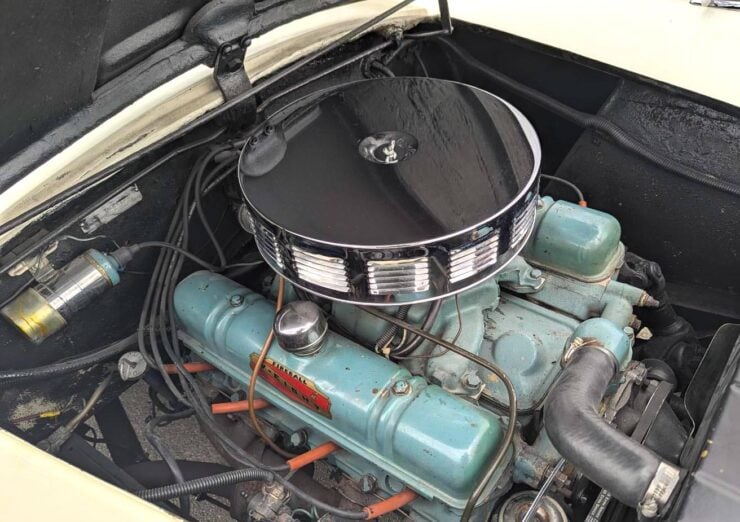

This positive reaction didn’t go unnoticed by Willys-Overland, who paid for the car and for Woodill himself to visit their headquarters so it could be inspected in closer detail. They were impressed, impressed enough to begin talks about building an official production run of “Willys Wildfires.”
It was around this time that Willys-Overland was in talks with Kaiser-Frazer about being acquired, and interestingly enough Kaiser-Frazer had been working on their own fiberglass-bodied sports car, the Kaiser Darrin.
In early 1953 the Woodill was featured in Time magazine, one of the largest magazines in the world at the time. It was a major publicity coup, but perhaps not well timed, as Mr Woodill was quoted as saying that the new car would be available to buy soon from Willys dealers as the Willys Wildfire.
Due to the impending acquisition, and the fact that Kaiser was working on their own fiberglass sports car, this unapproved announcement from Woodill was not welcomed at Willys, and the project was cancelled shortly thereafter.
Kit Car Production Gets Underway
Never one to let this sort of thing get him down, he set about manufacturing the sports car himself. It would be offered in body-only form, as a kit car, or as a complete turnkey sports car ready to drive.


In total, approximately 300 kits would be made from 1952 until 1958 – a high production number for such a small manufacturer.
Relatively few of these original cars remain today, we’ve written about some of them previously on Silodrome, and they were often finished with a variety of chassis and engines depending on who was building them.
The Woodill Wildfire “Buick Fireball Special” Shown Here
The car you see here is one of only a handful of Woodill Wildfire kits that were bought by the Harry Clark Buick Agency (dealership) of Compton, California in the mid-1950s. Rather than building the cars as the instructions suggested, the team at Harry Clark instead chose to build the car into the sports car that they wished Buick would release themselves.
The men assembling the car used 1953 Buick headlights and a shortened, modified 1953 Chevrolet grille. For the rear of the car, molds of a 1953 Buick’s rear fenders were taken and then transferred to fiberglass to give the car a consistent look with the rest of the Buick line of the time. A continental kit spare wheel was then added, along with a curved windshield reminiscent of that on the Corvette of the time.
Perhaps the most important addition was that 322 cubic inch (5.3 liter) Buick Fireball V8. This was an overhead valve V8 engine that had only debuted a year earlier, so when this car was being built it was a brand new engine design.
The early versions of this engine were capable of 188 bhp and 300 lb ft of torque – excellent figures for the time and enough to make this lightweight Woodill Wildfire a genuine performer. In this car, power was sent back through a Dynaflow transmission, with the shifter moved to the center tunnel for a more sports car-like look and feel.


This is one of very few Buick Fireball Specials built by Harry Clark Buick that are known to survive today. It has a white exterior, a two-tone red and white vinyl interior, with a red dashboard, white steering wheel, and a professional level of fit and finish.
The car is now due to roll across the auction block with Worldwide Auctioneers in late-April and it’s being offered without reserve. If you’d like to read more or register to bid you can visit the listing here.
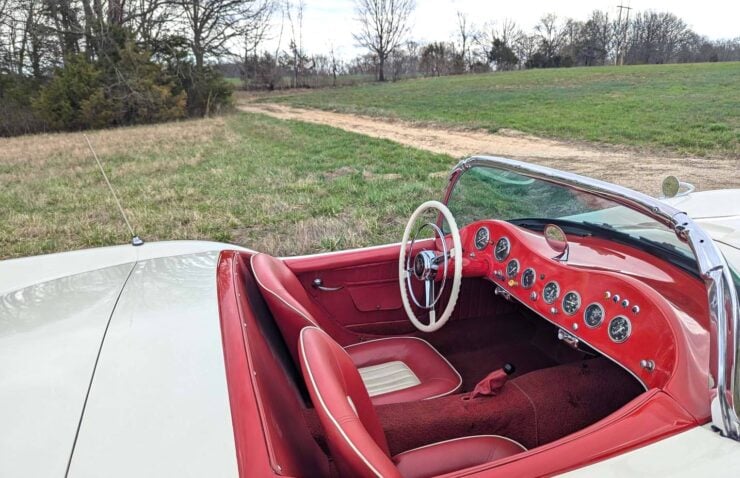

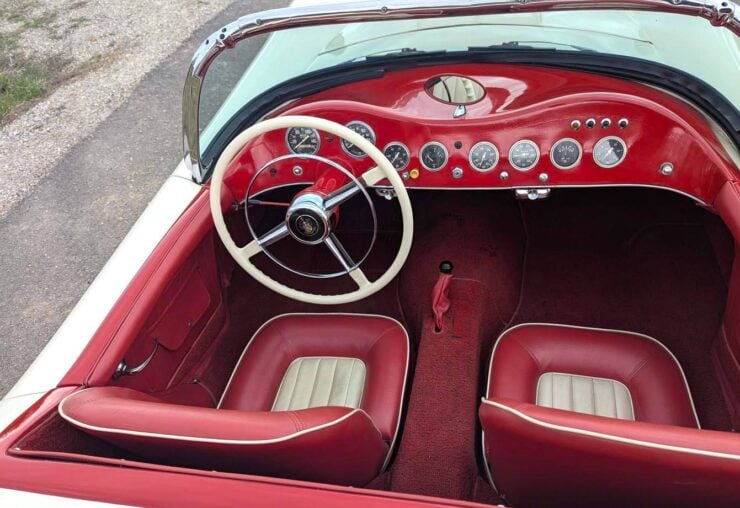
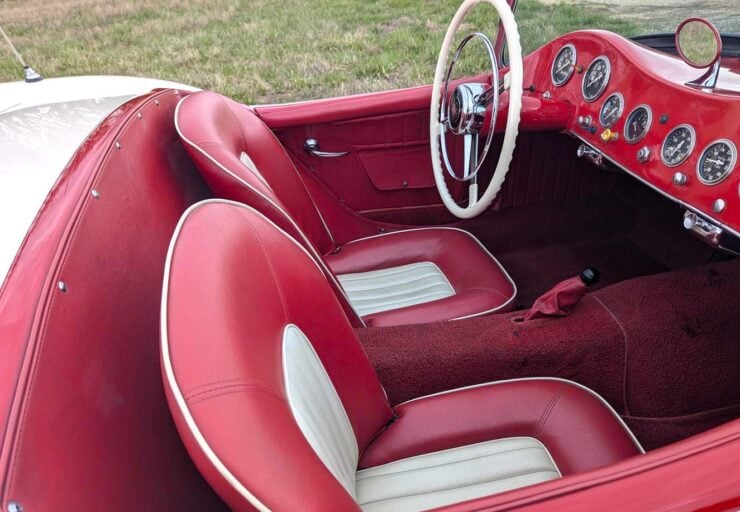
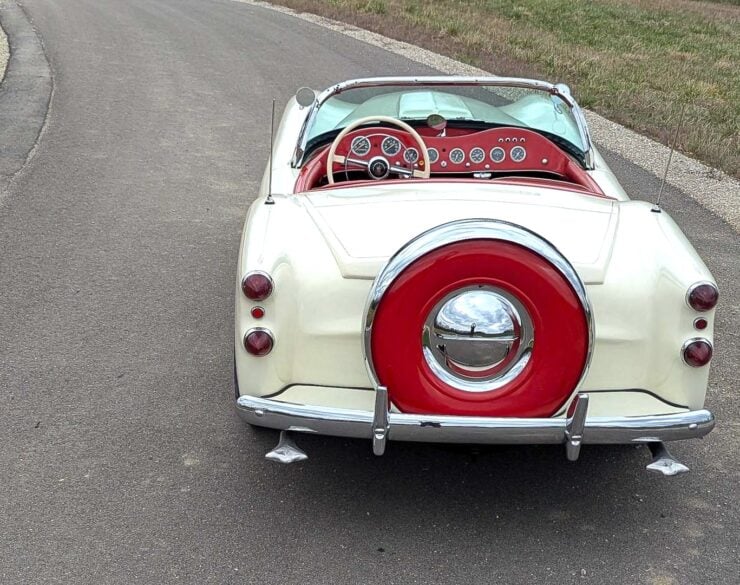


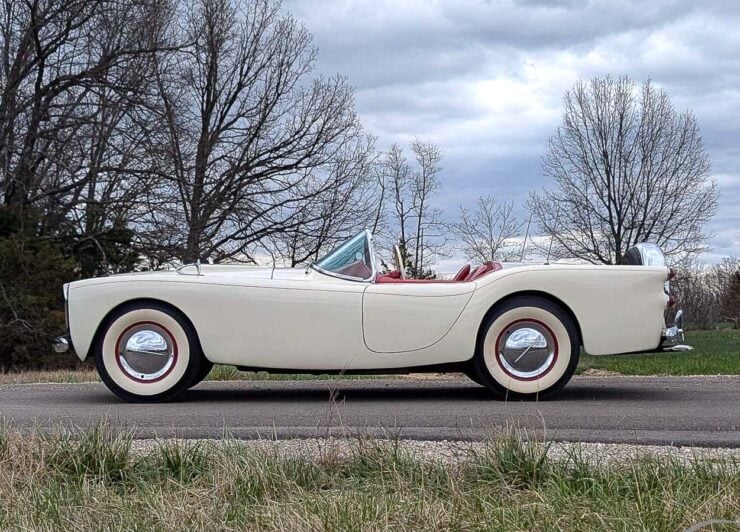


Images courtesy of Worldwide Auctioneers



